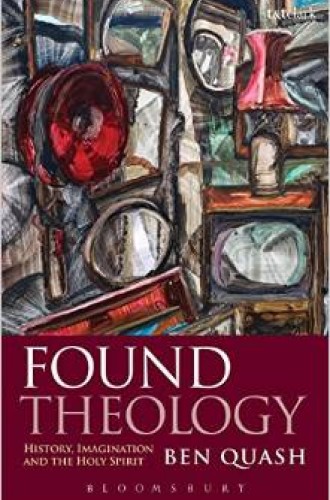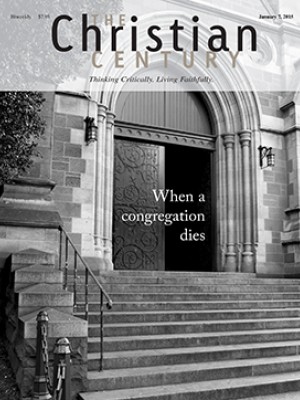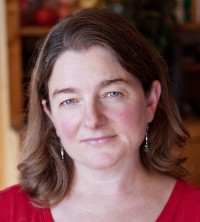Found Theology, by Ben Quash
The cover of Found Theology features the work of British artist Anna M. R. Freeman, who frequently goes to junk shops for inspiration for her painting. There she finds the history mixed with discovery that fuels her art. She sees junk shops as places where the past is not just remembered but re-membered: old objects are given new contexts and placed into relationship with new things. But in and of themselves, the objects do not mean much. They require the vision and imagination of the artist to draw out new meanings.
This is Ben Quash’s theological argument in a nutshell. For Quash, scripture and tradition are givens. They come to us without much choice on our part. We recite the creed that our ancestors recited. We read the same biblical passages they read. We inherit our parents’ choices as well as the choices of their grandparents and great-grandparents. But like the artist in the junk shop, our task is to discover and reinterpret what we have been given for new contexts and in relation to new circumstances. This work—pneumatological at its core—is what Quash calls “found theology.”
Read our latest issue or browse back issues.
In some ways Found Theology merely offers a theory for what we as humans do inevitably all the time: we take what is given to us in the physical world and rework it to make meaning for the present moment. Even theologies that claim to be orthodox or neoorthodox have the work of rearticulating orthodoxy for the present, and in that rearticulation, they inevitably shift orthodoxy because language and meaning are constantly shifting. What perhaps makes Found Theology unique is Quash’s embrace of that reality and his search for the work of the Holy Spirit within the ongoing processes of history. Quash is concerned with connecting theology to art, science, and interreligious dialogue. He is interested in a method for Christian theology that allows deep and meaningful interaction with these critical contemporary forces. As he proceeds, he opens up large vistas for the future of theology.
Quash works back and forth between theology and history, scripture, art, and poetry. In all of these, human imagination is a vehicle for the work of the Holy Spirit. The scripture that we have received comes to us with what Quash—borrowing from Jewish scholar David Weiss Halivni—calls “maculations”: flaws, oddities, gaps, and inconsistencies. Quash points to the moment when English Bible translators began to undo the “singleness, univocity and therefore . . . dream of universality” of the Latin Vulgate. As they did this work, they found new ambiguities in the text. They reached backward for Greek and Hebrew and found still more difficulties. The act of translating the Bible into English uncovered not the “plain meaning,” as Tyndale had hoped, but instead multiple meanings that were made all the more ambiguous by the historical moment of translation itself. Translation required acts of the imagination, leaps across the maculations of the texts, new meanings for old things. It is no wonder that the Latin-reading establishment found this activity so threatening.
Drawing on Peter Ochs, Quash argues that these textual ambiguities are helpful to the work of the Holy Spirit. God uses maculation to “beckon” human beings into the texts to participate in further acts of interpretation. The text becomes a source of generative creativity as the work of interpretation goes on and on, and God continues to reveal the meanings of the text with the aid of human agency and human imagination. No act of interpretation is universal or complete because every historical moment in which it is read is different. Quash believes that the Torah and the Gospels can both be read as “properly maculate; properly as a troubled and creatively troubling text.”
These troubled and troubling texts obviously have readers, but in the history of Christian theology, the fact that readers shape texts has usually been neglected. Perhaps this is because reading is so intensely personal and unstable. Texts seem to change under our eyes from one reading to the next. Quash believes that by paying attention to readers and the reception of ancient texts, we will be better able to draw those texts into our present moment—conscious that drawing them forward is an act of agency and imagination.
As a guide to our study, Quash offers a 15th-century work of the Venetian painter Vittore Carpaccio: a painting of the body of the dead Christ. Carpaccio has situated the body of the slain Jesus in the foreground and his tomb in the background. In the center of the painting an old man sits under a tree contemplating the body of Christ. Quash reads that old man as Job, who, Quash argues, was found by Carpaccio in his search for resources to understand his own particular historical moment, particularly the massive destruction of the bubonic plague. Carpaccio’s painting is a question more than an answer—it is created in what Quash calls the “interrogative mode”—and Quash believes that this is why it appeals to contemporary viewers. The old man under the tree is a puzzle, and he also appears to be contemplating a puzzle: the dead Christ.
The questions embedded in the painting require us to be active interpreters, encountering the painting with understandings of our own. Although Carpaccio’s own context can answer some of the questions the painting proposes, it can’t answer all of them. Reception theory, as Quash wants to use it, does not say that physical objects exist only in the eyes of the reader or viewer. Instead it insists on a relationship between viewer and object, reader and text. History can interact unpredictably and generatively with texts, and texts also shape history, in a reciprocal relation.
To read scriptures, art, and history, we need a form of human logic that Quash, borrowing from philosopher Charles Peirce, calls abduction. This is the capacity of human thought to make imaginative leaps that are rooted in experience but are not based wholly on facts. Abduction is the tool we use to “read the signs” of the world and interpret what they mean when a reasoner “is faced with a challenge to her fixed marks.”
For example, when scientists first encountered marine fossils in a land-locked area, they had to go beyond their fixed marks to offer theories for why and how they might have come to be there. By reading the signs of the landscape, they reasoned that an upheaval had taken place and that the land had changed in some fundamental way. Gradually a narrative about this change emerged, as new facts and experiences were added to old.
Quash sees theology behaving similarly. It can function in interrogative and narrative modes, instead of imperative and declarative. It also can think in a more ambitiously comprehensive way—drawing on science and art to do its work rather than narrowing its focus and building boundaries to keep other discourses out. Art, more often than not, works analogically, by bringing signs into relationship with one another and with the observer. This is what theologians must also learn to do: use imagination to draw the given into relationship with the found.
The Holy Spirit, who makes the world more known to us through “unfolding-in-connection,” is fundamentally relational—binding us to God, the world, history, and ultimately the future. The Spirit “binds absolute beginning with absolute end, in the life of a Godhead that enfolds rather than opposes difference and time.” Found theology is the work of linking revelation and reception, as humans “interpret and re-interpret what has been given, find and re-find it.”
Quash hopes to make Christian theologians open to the world in front of them: to art, nature, science, and its various dialogue partners. Theologians who believe that the Holy Spirit is guiding us through a changing landscape can become skilled retrievers of the past, interpreters of the present, and perhaps prescient seers of the future, but always in dialogue with others, and having the humility to acknowledge limited vision.
Quash is very clear about who his main theological dialogue partners are: Ochs, Dan Hardy, and Rowan Williams are a few of them. Unfortunately, he is less clear about who his theological antagonists are. Found theology, as he describes it, seems like such a natural human capacity that it is difficult to imagine any theology that is not found theology. But we can perhaps distinguish found theology from any theology that imagines a purity of the past, and any theology that imagines itself as a closed system that need only speak of and to itself.







